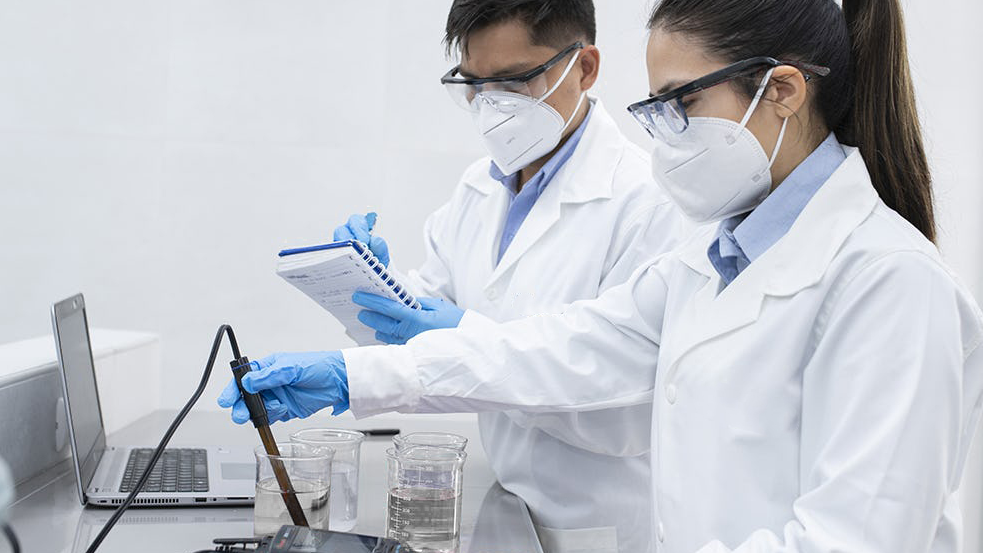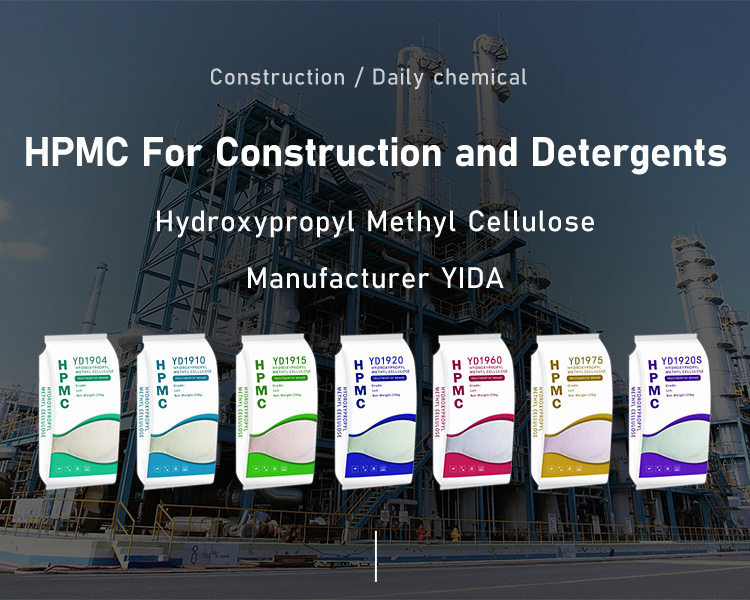Chemical Properties
Hydroxypropyl methylcellulose (HMPC) is soluble in water and most polar solvents and in appropriate proportions of ethanol/water, propanol/water, dichloroethane, etc. It is insoluble in ether, acetone, and absolute ethanol. It swells into a clear or slightly cloudy colloidal solution in cold water. The aqueous solution has surface activity, high transparency and stable performance.
As the HPMC manufacturer, Hebei Yida Cellulose Co., Ltd., the properties of hydroxypropyl methylcellulose HPMC are described as follows:
It has the property of thermal gelation. The aqueous solution of the product is heated to form a gel and precipitate, and it dissolves after cooling. The gel temperature of products with different specifications is different. The solubility changes with the viscosity. The lower the viscosity, the greater the solubility. The properties of HPMC with different specifications are different. The dissolution of HPMC in water is not affected by the pH value.

Particle size: 100 mesh pass rate is greater than 98.5%.
Bulk density: 0.25-0.70g/ (usually about 0.4g/),
Specific gravity: 1.26-1.31,
Discoloration temperature: 180-200℃,
Carbonization temperature: 280-300℃,
Methoxy value: 19.0%-30.0%,
Hydroxypropyl value: 4%~12%,
Viscosity (22℃, 2%): 5-200000mPas.
Gel temperature (0.2%) 50-90 ℃.
HPMC has the characteristics of thickening ability, salt expulsion, pH stability, water retention, dimensional stability, excellent film-forming properties, and a wide range of enzyme resistance, dispersibility and cohesiveness.
As a HPMC manufacturer, Hebei Yida Cellulose Co., Ltd. describes the chemical properties of HPMC as follows:
1. Appearance: white or off-white powder
2. Particle size; 100 mesh pass rate is greater than 98.5%; 80 mesh pass rate is 100%; special specifications of particle size 40~60 mesh
3. Carbonization temperature: 280-300℃
4. Apparent density: 0.25-0.70g/cm (usually around 0.5g/cm), specific gravity 1.26-1.31
5. Discoloration temperature: 190-200℃
6. Surface tension: 42-56dyn/cm for 2% aqueous solution
7. Solubility: soluble in water and some solvents, such as appropriate proportion of ethanol/water, propanol/water, etc. Aqueous solutions are surface active. High transparency and stable performance. Different specifications of products have different gel temperatures, and solubility changes with viscosity. The lower the viscosity, the greater the solubility. Different specifications of HPMC have certain differences in performance. The dissolution of HPMC in water is not affected by pH value. 8. With the decrease of methoxy group content, the gel point increases, the water solubility decreases, and the surface activity of HPMC decreases.
9. HPMC also has the characteristics of thickening ability, salt resistance, low ash powder, pH stability, water retention, dimensional stability, excellent film-forming properties, and a wide range of enzyme resistance, dispersibility and cohesiveness.

As a HPMC manufacturer, Hebei Yida Cellulose Co., Ltd. describes the synthesis method of HPMC as follows:
1. Treat the refined cotton cellulose with alkali solution at 35-40 ℃ for half an hour, press, pulverize the cellulose, and properly age at 35 ℃.
2. The average degree of polymerization of the alkali fibers obtained is within the desired range.
3. Put the alkali fiber into the etherification kettle, add propylene oxide and methyl chloride in turn, and etherify at 50-80℃ for 5h, the maximum pressure is about 1.8MPa.
4. Then add an appropriate amount of hydrochloric acid and oxalic acid to the hot water at 90°C to wash the material to expand the volume.
5. Dehydrate with a centrifuge. Wash until neutral.
6. When the water content in the material is less than 60%, dry it with a hot air flow at 130°C to less than 5%.
As a HPMC manufacturer, Hebei Yida Cellulose Co., Ltd. describes the dissolving method of HPMC as follows:
1. All models can be added to the material by dry mixing;
2. When it needs to be directly added to the normal temperature aqueous solution, it is best to use the cold water dispersion type, and it usually takes 10-90 minutes to thicken after adding;
3. Ordinary models can be dissolved after stirring and dispersing with hot water first, and then adding cold water, stirring and cooling;
4. If the phenomenon of caking and wrapping occurs when dissolving, it is because the stirring is insufficient or the ordinary model is directly added to the cold water.
If you want to know more about the performance and features of HPMC, you can contact us for technical support and free samples.
